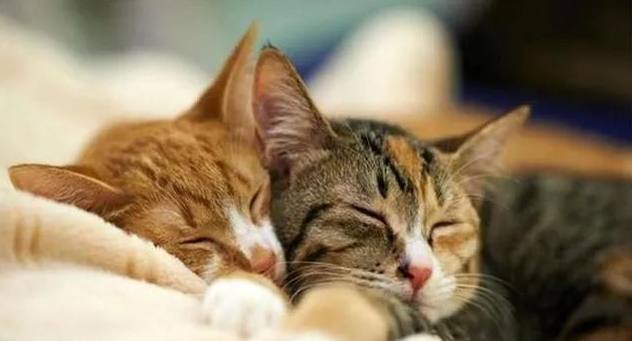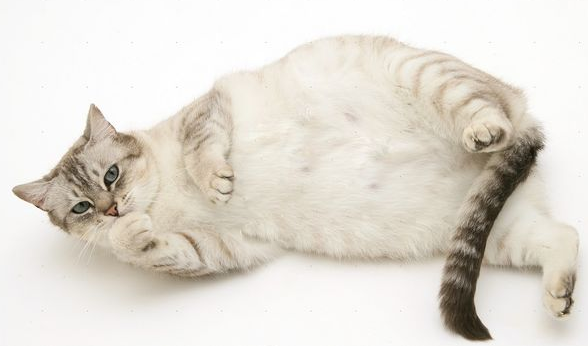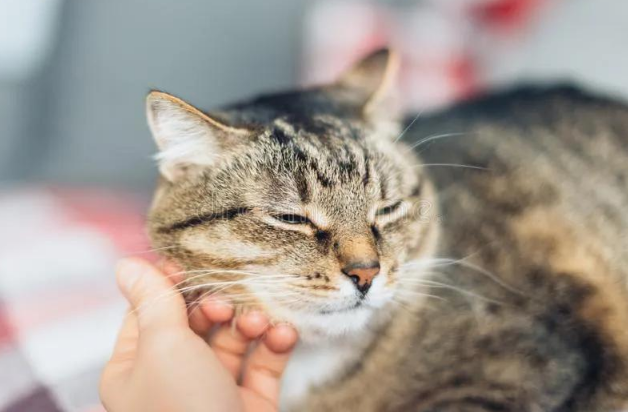When we adopt or buy a cat, we usually don’t care too much about the gender of the cat. Some catteries will recommend spaying or neutering the cat before you take it home, and some pet stores will inexplicably raise the price of female cats on the grounds that they can breed
Best age for cat breeding
Most cats enter the stage of sexual maturity at 6 months of age (long-haired cats and some breeds of short-haired cats may be later, after about 10 months).If there is no need for breeding, you can take your cat to be spayed or neutered at 6 months of age.
Suppose the owner wants the cat to have babies.It’s best to wait until the cat is 1 year old to do the breeding. Cats in heat during this period will be more stable and breeding will be relatively easy.
Secondly.If the cat is over 5 years old, it is recommended that the cat not be bred again. Not only will there be fewer litters in a cat’s pregnancy at this age, but the probability of a difficult birth will also be high.

Timing of mating in cats
The best breeding seasons for cats are spring and fall, with up to 2 pregnancies a year. When pairing cats, it is best for owners to find trusted cat friends, preferably of the same breed, to avoid inbreeding, and to be sure of the health of the other cat.
When the female cat starts courting the male cat, they can be kept together and allowed to mate 3-4 times. Owners can also simply leave the female cat at the male cat’s residence and bring her home after 3-4 days.
Owners should not be anxious during this period, which can easily cause stress to the cat. After bringing the cat to a new environment, the cat may be emotionally stressed and unmotivated to fall in love.For slower female cats, it may take up to a week to acclimatize.

Pregnancy cycle of female cats
The gestation cycle of a female cat ranges from 56 to 71 days.Average of about 65 days. If a mother gives birth to kittens before the 58th day of gestation, the kittens will usually be stillborn or very weak. If the pregnancy lasts more than 71 days before delivery, the kittens produced will usually be larger and may result in a difficult birth. Therefore.If the mother cat has been pregnant for more than 70 days without any signs of labor, the cat must be taken to a veterinary hospital.。
In addition.Female cats are prone to false pregnancy. False pregnancies are mainly caused by hormones produced by the ovaries, and can also appear as a pregnancy with an enlarged abdomen or reddened nipples, which stop when the cat passes the pregnancy stage (around 60 days).It is recommended that 21-28 days after the female cat is bred, take the cat to the veterinary hospital for abdominal palpation and ultrasound, at which time it can be confirmed whether the cat is pregnant or not。
General.The optimal number of litters for a female cat to get pregnant is 3-4 littersThe mother cat can fully take care of each kitten. Larger female cats will have more litters.
If the mother cat gives birth to too many kittens at once and exhausts her strength during labor, she will easily suffer from insufficient milk or low blood calcium, and the lives of both the mother cat and the kittens will be in danger.

Nutritional supplementation of female cats during pregnancy
Pets need special attention when they’re pregnant, tooWhile it’s important to supplement your diet, you shouldn’t eat too many high-calorie foods. Failure to do so can cause the kittens to become too large, resulting in difficult labor for the mother cat.
Therefore, calories should be increased in small amounts during the first half of a cat’s pregnancy so that the mother cat can gain weight steadily. Kitten food will have a relatively balanced nutritional profile, but choosing a conscientious cat food is vital and must be done with care.
In addition.Minerals and vitamins must also be provided additionally, such as taurine and folic acid. Shovelers can also cook some chicken breasts and beef and feed them 1-2 times a week to supplement their cats with high-quality protein。
Female cats will suffer from lethargy and mood swings during pregnancy. Owners should try not to put pressure on the cat, pet the cat more often, and even reduce the frequency of going out and bathing to prevent the cat from miscarrying due to emotional stress.
Creating a comfortable and productive environment for cats
As we approach the time when the cat goes into labor, the owner can prepare the maternity ward for the cat.
1, the cat’s maternity ward should be large enough, the owner can use a large cardboard box to make a maternity ward for the cat.
2. It is best to build the maternity ward in a quiet and safe area, and after building it, you can observe whether the mother cat will go in for a rest. If the mother cat refuses to go in, it means that it thinks that the maternity ward is not safe.
3. The delivery room should be clean and cozy, and it’s okay to put a small blanket of its own or clean clothes.
On the day the cat gives birth, the owner should prepare plenty of water and food for the mother cat to replenish her strength.

Problems cats may experience during labor and delivery
The birth of a female cat can be controlled by consciousness, soWhen a mother cat is in an unfamiliar environment or under stress, labor may be delayedThe position and size of the fetus or the condition of the mother can also affect labor. The position and size of the fetus or the condition of the mother will also affect the delivery. Therefore, in case of the following conditions, you need to take your cat to a doctor immediately.
1. Abnormal discharge from the vulva (e.g., reddish-green discharge with a foul odor)
2. Female cats are weaker and irregularly exert abdominal force for more than 2-4 hours
3. Kittens or vesicles can be seen in the vulva, and the kittens have not been born out for more than 15 minutes
4. The amniotic membrane ruptures and amniotic fluid flows out, but the kitten is not born
5. Female cats will keep crying or licking and biting the pubic area
6. Not born more than one week after the expected date of delivery
7. Unable to give birth to all kittens within 36 hours
What owners need to do after a cat gives birth
After giving birth to a cat, the mother cat still needs the owner’s careful care, so as to ensure the maximum health of the mother cat and kittens.
1. Provide adequate drinking water and food.
2. Supplement nutrition and provide more high protein food. You can make some easy-to-digest boiled chicken or fish for cats to promote the milk secretion of cat mothers.
3、Pay more attention to the situation of the mother cat and the kittens (but do not have frequent contact to prevent the mother cat from abandoning the kittens), and find the weak kittens abandoned by the mother cat in time and take good care of them。
4. Pay attention to the hygiene of the cat’s nest, keep it dry, sterilize and clean it well.
It’s not easy for a cat to give birth once.If an owner has the idea of letting their cat breed, they must plan for it and determine if they are capable of taking good care of them or if they can guarantee that they will find a comfortable new home for them.If you have been hesitant to do so, it may affect the best time to spay or neuter your cat or to breed, which is not very friendly to both the cat and the owner.

